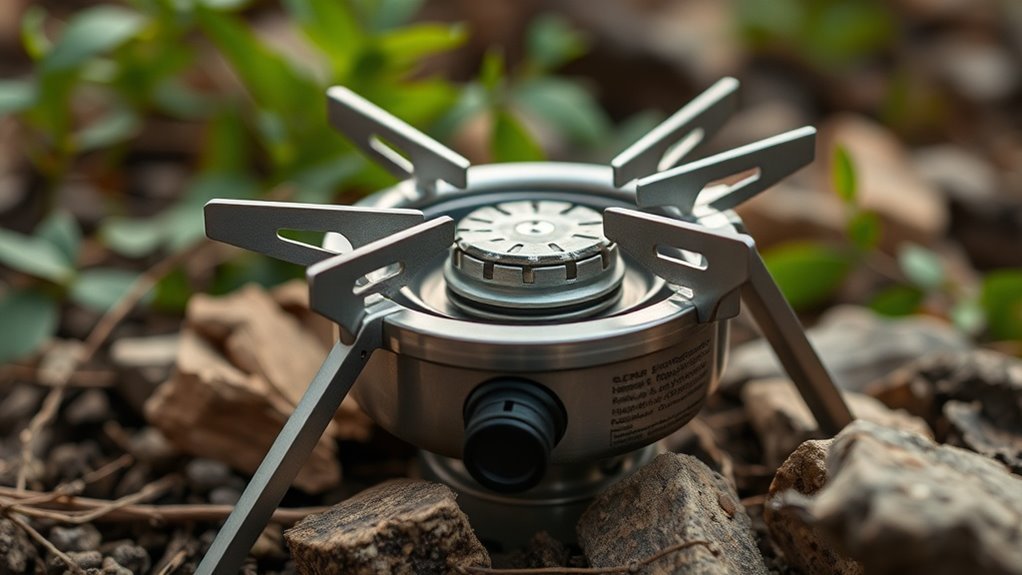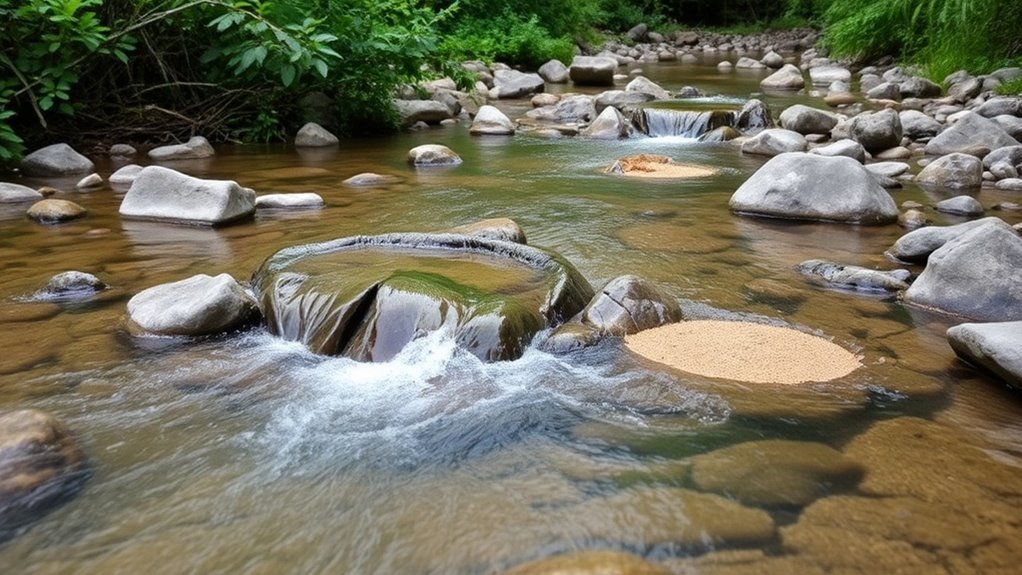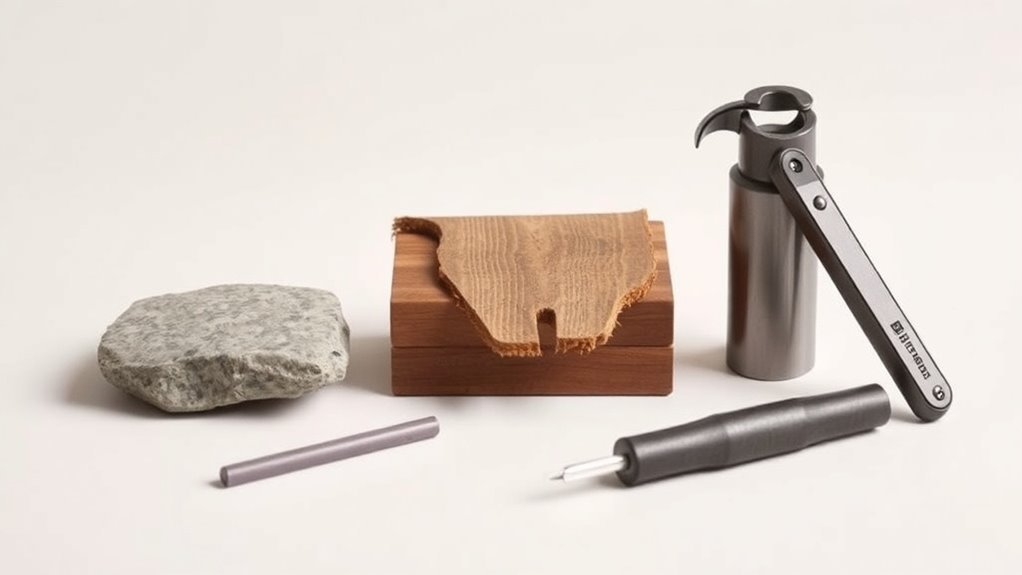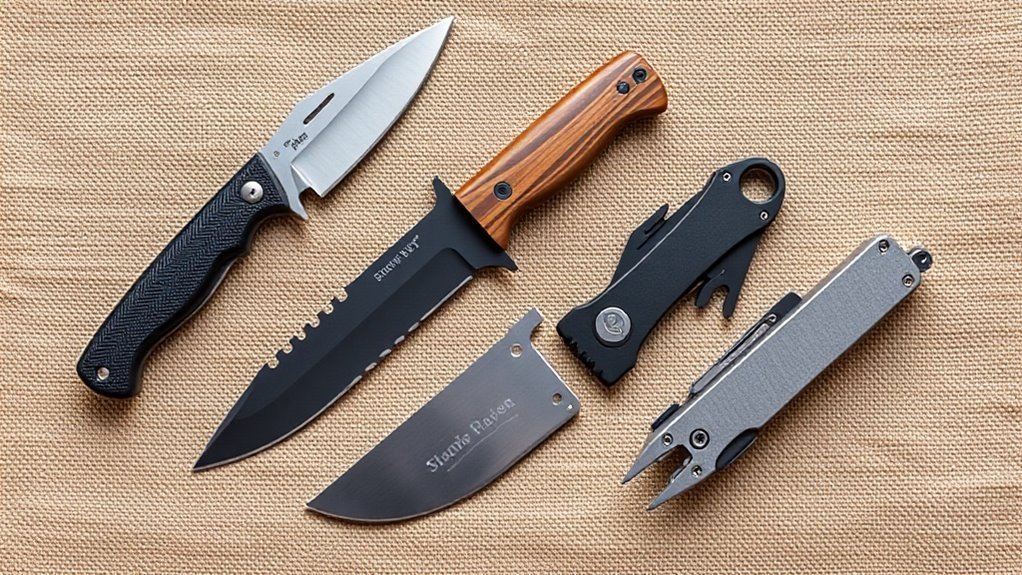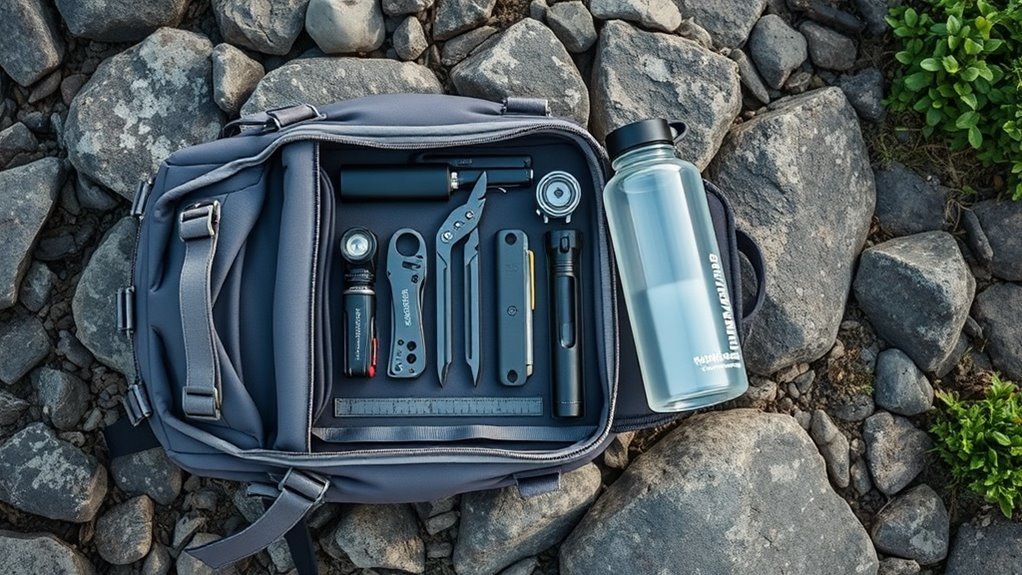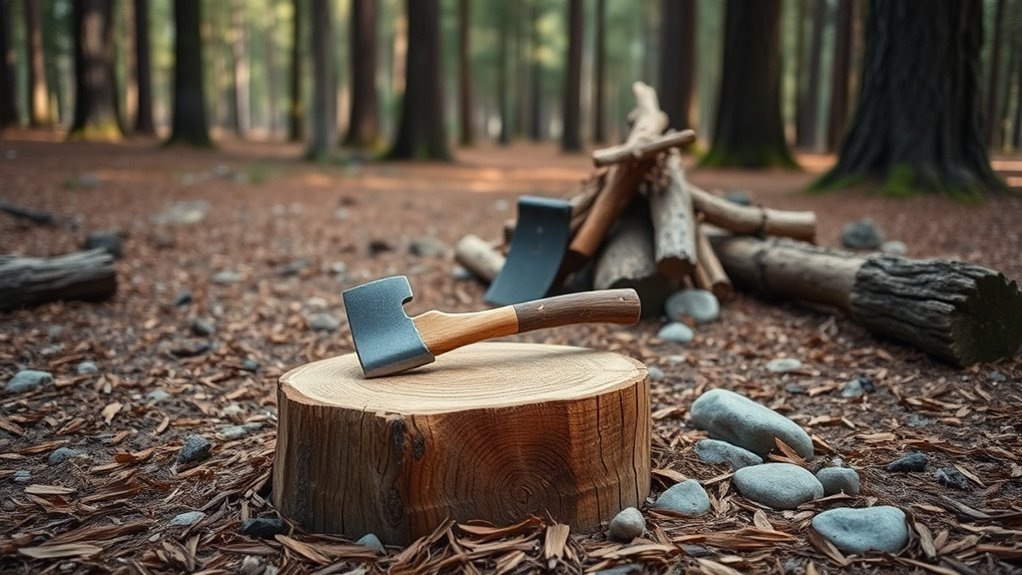Anatomy of a Survival Knife: What Makes It Effective
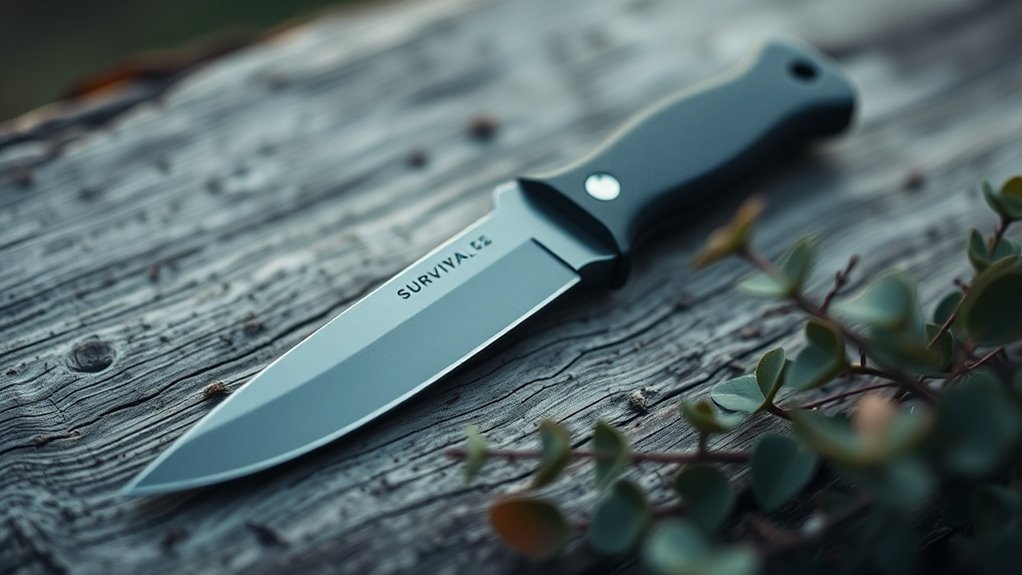
The effectiveness of a survival knife lies in its thoughtful design. You’ll find various blade types like drop point and tanto, tailored for different tasks. The materials, whether high-carbon steel or ceramic, affect hardness and durability. A well-designed handle guarantees a secure grip, making it safer to use. Additionally, the sheath and carry options play a vital role in accessibility. Each feature contributes to your knife’s readiness for survival scenarios, and there’s more to discover about these essentials.
Key Takeaways
- Blade Type: A drop point or tanto blade offers versatility for various tasks, enhancing effectiveness in survival situations.
- Material Composition: High-carbon steel or titanium provides durability and edge retention, critical for reliable performance in the wild.
- Handle Design: Ergonomic grips made of non-slip materials improve comfort and safety, reducing the risk of slippage during use.
- Sheath Quality: A robust sheath protects the blade, allowing for safe storage and quick access in emergencies.
- Weight and Balance: A well-balanced knife is easier to wield, crucial for efficiency and control during demanding tasks.
Blade Types and Their Uses
When it comes to survival knives, the blade type plays an essential role in its effectiveness.
You’ll typically encounter three main types: drop point, clip point, and Tanto.
A drop point blade features a strong tip for piercing, making it ideal for skinning game or general tasks.
Clip point blades have a higher tip that allows for better control in detailed work, perfect for tasks like carving.
The Tanto blade, with its strong tip and flat edge, excels in penetration and rugged use, suitable for prying or heavy-duty cutting.
The Tanto blade’s strong tip and flat edge make it perfect for heavy-duty cutting and prying tasks.
Each blade type offers unique advantages, so it’s vital to choose one that aligns with your anticipated needs in survival situations.
Knowing these differences can profoundly impact your readiness in the wild.
Materials: Steel vs. Other Options
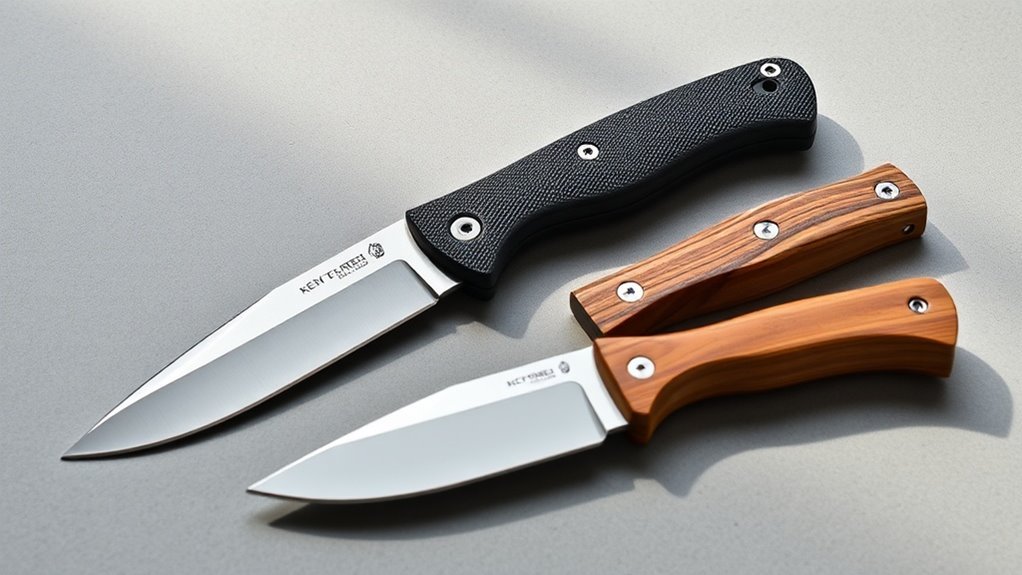
When choosing a survival knife, the material of the blade plays an essential role in its overall performance.
You’ll want to take into account factors like hardness, durability, and resistance to corrosion, as these can greatly influence how well your knife holds up in the field.
While steel is a popular option, other materials might offer unique benefits worth exploring.
Blade Composition Types
While many survival knives feature blades made from steel, other materials are gaining traction due to their unique properties and benefits.
When considering the right blade for your needs, you might want to explore alternatives like:
- Ceramic: Lightweight and resistant to corrosion, perfect for tasks requiring precision.
- Titanium: Strong yet flexible, it’s incredibly durable and often used in heavy-duty applications.
- Composite Materials: These can combine various elements for a versatile blade that balances weight and strength.
Each material has its strengths and weaknesses, and understanding these can help you make an informed decision about what knife will best serve you in the wild.
Assess your specific needs and choose wisely for ideal reliability during your adventures.
Hardness and Durability
Though steel is often regarded as the gold standard for knife blades, it’s essential to contemplate how hardness and durability can vary considerably among materials.
While high-carbon steel offers excellent hardness, it’s not the only option. Consider ceramic blades; they’re incredibly hard and can maintain a sharp edge for a long time. However, they can be more fragile, which mightn’t suit your survival needs.
Titanium is also worth mentioning, as it’s lightweight and extremely durable, but it doesn’t hold an edge as long as steel.
When choosing your survival knife, think about the balance between hardness and durability that best fits your requirements. Each material has its strengths and weaknesses, so pick one that aligns with your intended use.
Corrosion Resistance Factors
One of the critical factors to take into account in a survival knife is its corrosion resistance, especially when you plan to use it in wet or humid environments. The right material can make a huge difference.
- Stainless Steel: Offers excellent corrosion resistance due to chromium content but may sacrifice some hardness.
- Carbon Steel: While durable and easy to sharpen, it’s more prone to rust unless properly maintained.
- Coated Blades: Some knives come with protective coatings that enhance corrosion resistance, though they may wear off over time.
Choosing the right material will guarantee your knife stands up to the elements, providing reliability when you need it most.
Regular maintenance also plays an essential role in preserving your blade’s integrity.
Handle Design and Comfort
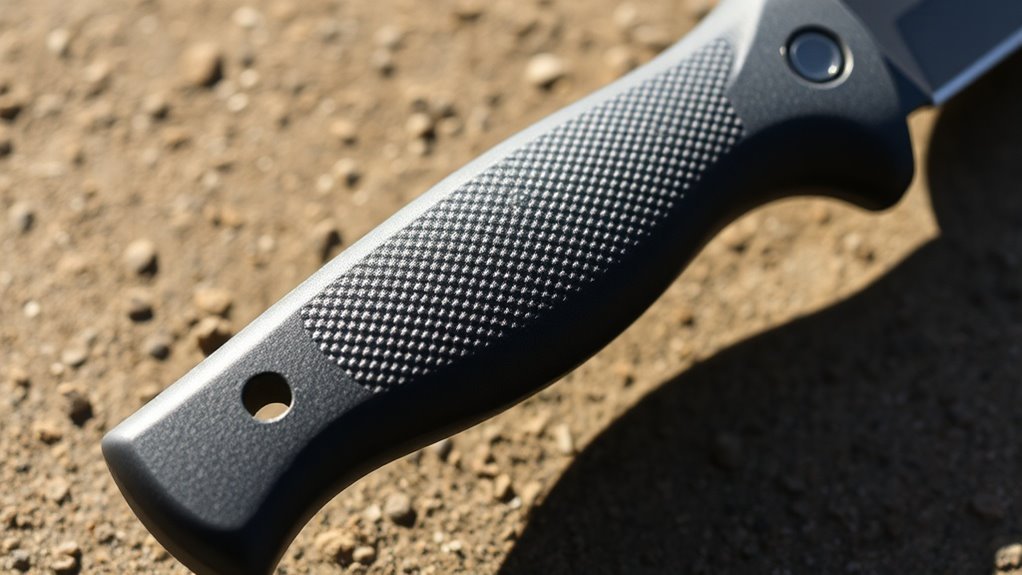
When choosing a survival knife, the handle design and overall comfort play an essential role in ensuring your grip remains secure during intense situations. A well-designed handle can reduce fatigue, minimize slippage, and enhance control, especially in adverse conditions. Investing in a knife with ergonomic considerations can significantly improve your overall performance and reduce the risk of injury during use.
| Material | Texture | Ergonomic Shape |
|---|---|---|
| Grivory | Non-slip | Contoured |
| Micarta | Textured | Finger grooves |
| Rubber | Soft grip | Tapered end |
These features make a significant difference when you’re relying on your knife for safety. Look for materials that provide a good grip, ensuring your confidence as you tackle challenging tasks. With the right handle, you’ll feel ready to face whatever comes your way.
Weight and Balance Considerations
Weight and balance are critical aspects to evaluate in a survival knife, as they directly affect your ability to wield it effectively. A well-balanced knife feels natural in your hand, making it easier to control during tasks.
When choosing a survival knife, consider the following:
- Weight: Lighter knives are easier to carry but may sacrifice durability. Heavier knives can endure tougher tasks but might fatigue you faster.
- Balance Point: A knife with a balanced point, ideally near the handle, allows for better maneuverability and precision.
- Grip: Verify the weight distribution complements the handle design, providing comfort during extended use.
Finding the right combination of these factors can enhance your efficiency and safety in survival situations.
Sheath and Carry Options
Properly securing your survival knife is just as important as selecting one with the right weight and balance. A good sheath protects the blade and keeps you safe from accidental cuts.
Proper sheath selection is crucial for safety and blade protection, matching the knife’s weight and balance.
You’ll want a sheath made from durable materials like nylon or leather, ensuring it withstands the elements.
Consider the carry options, too. A sheath with a belt loop or clip allows for easy attachment to your gear or clothing. If you prefer hands-free carrying, look for a shoulder strap or leg strap option.
Keep in mind the knife’s accessibility; you don’t want to fumble when you need it.
Ultimately, your sheath and carry options should provide protection, comfort, and quick access to your survival knife when it matters most.
Additional Features and Accessories
A well-designed survival knife often comes with additional features and accessories that enhance its functionality.
These elements not only improve your knife’s usability but also increase your chances of survival in the wild.
Here are a few must-have additions:
- Microfiber Fire Starter: Essential for igniting fires quickly, it’s a lifesaver in cold or wet conditions.
- Paracord Handle: This sturdy material can be unraveled for various uses, such as building shelter or fishing.
- Built-in whistle: A loud emergency signal can make all the difference when you need to attract attention.
Questions
How Should I Maintain My Survival Knife for Longevity?
To maintain your survival knife for longevity, regularly clean it after use, keep it dry to prevent rust, apply oil to the blade, and sharpen it as needed to guarantee superior performance during your adventures.
Can a Survival Knife Be Used for Self-Defense?
Yes, a survival knife can be used for self-defense. Its versatility and sturdiness make it effective in emergency situations, but it’s vital to understand proper techniques and the legalities surrounding self-defense in your area.
What Size Blade Is Best for a Survival Knife?
A blade size between 4 to 6 inches is best for a survival knife. It offers balance and versatility, making it suitable for various tasks, from cutting to carving, while remaining manageable in challenging situations.
Are Survival Knives Legal to Carry in All States?
Survival knives aren’t legal to carry in all states. Laws vary considerably, so you’ll need to check local regulations regarding blade length, type, and carry methods. Always make sure you’re informed before heading out.
How Do I Choose a Knife for Different Environments?
Did you know that 70% of outdoor enthusiasts prefer versatile knives for varying terrains? To choose wisely, consider materials, blade length, and grip feel based on the environment—be it wet, dry, or rugged.
Conclusion
In the wild, a survival knife isn’t just a tool; it’s your Excalibur, ready to conquer challenges. By understanding blade types, materials, and handle design, you’ll find the perfect companion for any adventure. Don’t overlook weight and balance—like a knight with their sword, the right feel can make all the difference. Remember to take into account sheath options and additional features to guarantee you’re fully equipped. With the right knife, you’re not just surviving; you’re thriving.

